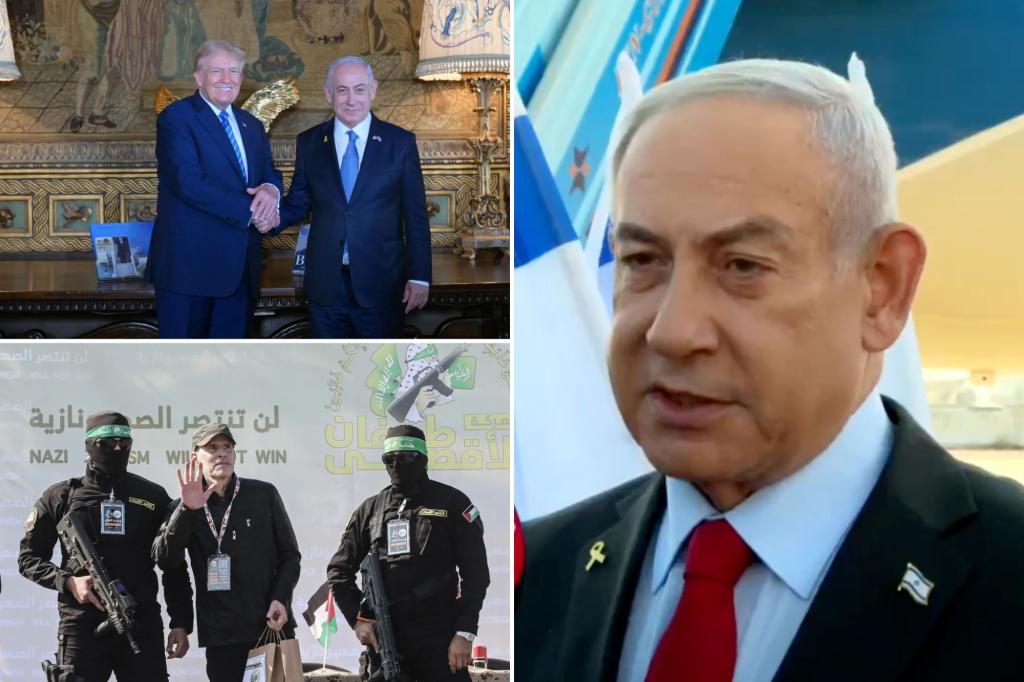The Netanyahu-Trump Summit and the Intricate Web of Middle East Politics
Israeli Prime Minister Benjamin Netanyahu’s meeting with former US President Donald Trump marks a significant juncture in the complex landscape of Middle Eastern politics. The discussions revolve around critical issues, including the aftermath of the devastating war with Hamas, the ongoing threat posed by Iran, and the potential for expanding Israel’s diplomatic ties with Arab nations. This meeting, being Trump’s first with a foreign leader since returning to office, underscores the enduring strength of the US-Israel alliance and the importance both leaders place on addressing these pressing concerns.
Netanyahu’s agenda encompasses three primary objectives: securing victory over Hamas, ensuring the release of all Israeli hostages, and countering the influence of Iran and its network of terror groups throughout the region. The recent war with Hamas, triggered by a brutal attack on Israeli soil, has left a trail of destruction and loss, demanding a decisive resolution. The fate of the remaining hostages held by Hamas remains a critical humanitarian concern that adds urgency to the negotiations. Furthermore, the looming threat of Iran and its regional ambitions necessitates a unified strategy to maintain stability and security.
The recent ceasefire agreement between Israel and Hamas, brokered with the assistance of US and Arab mediators, represents a fragile step towards peace. The agreement facilitated the release of a number of hostages held for over 15 months and a reciprocal release of Palestinian prisoners by Israel. However, Hamas, now firmly back in control of Gaza, has linked the release of the remaining hostages to the complete withdrawal of Israeli forces and a definitive end to the war. This stance complicates the already delicate negotiations and introduces a significant obstacle to achieving a lasting peace.
Netanyahu faces mounting domestic pressure to resume hostilities if the second phase of the ceasefire agreement fails to yield the desired results by early March. This pressure emanates from far-right elements within his governing coalition, who advocate for a more forceful approach towards Hamas. The Prime Minister, walking a tightrope between the demands of his coalition partners and the international push for a peaceful resolution, finds himself in a precarious political position. His commitment to both “victory over Hamas” and the safe return of all hostages necessitates a carefully calibrated strategy that balances domestic pressures with the realities of the complex geopolitical situation.
Trump’s position on the Israeli-Palestinian conflict presents both opportunities and challenges. While a staunch supporter of Israel, he has also expressed a desire to end wars in the Middle East and has taken credit for his role in facilitating the current ceasefire. This apparent contradiction creates uncertainty about his approach to the second phase of the agreement and the potential for a broader resolution. His past success in brokering normalization agreements between Israel and several Arab nations suggests a potential pathway for expanding the circle of peace. However, his previous actions also raise questions about his commitment to a balanced approach that addresses the legitimate concerns of both sides.
The aspirations for a wider, potentially historic agreement involving Saudi Arabia loom large on the horizon. Such a deal could reshape the regional political landscape, but faces significant hurdles. Saudi Arabia has conditioned its participation on the cessation of hostilities between Israel and Hamas and a demonstrable commitment to a two-state solution, a scenario the current Israeli government opposes. This divergence in fundamental positions poses a formidable challenge to achieving such a landmark agreement. The internal political dynamics within Israel further complicate matters, with key members of Netanyahu’s coalition threatening to withdraw support if the war is not resumed. This precarious situation underscores the fragility of the current political landscape and adds another layer of complexity to the pursuit of a broader peace agreement.
The intricate web of interconnected interests and conflicting objectives makes the path forward fraught with uncertainty. The success of the Netanyahu-Trump meeting will depend on their ability to navigate these complexities, balance competing demands, and forge a path towards a sustainable peace in the region. The stakes are high, and the outcome of these discussions will have far-reaching consequences for the future of the Middle East. The challenge lies in finding a solution that addresses the security concerns of Israel, the humanitarian needs of the Palestinian people, and the broader regional stability goals of the international community. This delicate balancing act requires skillful diplomacy, political courage, and a willingness to compromise on all sides.










